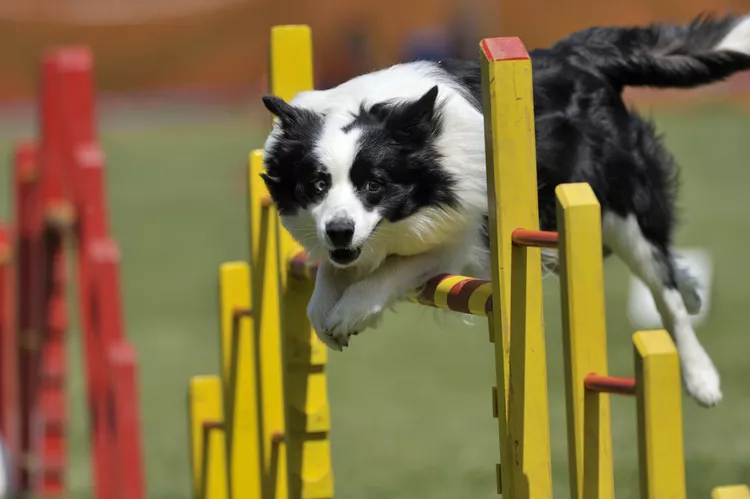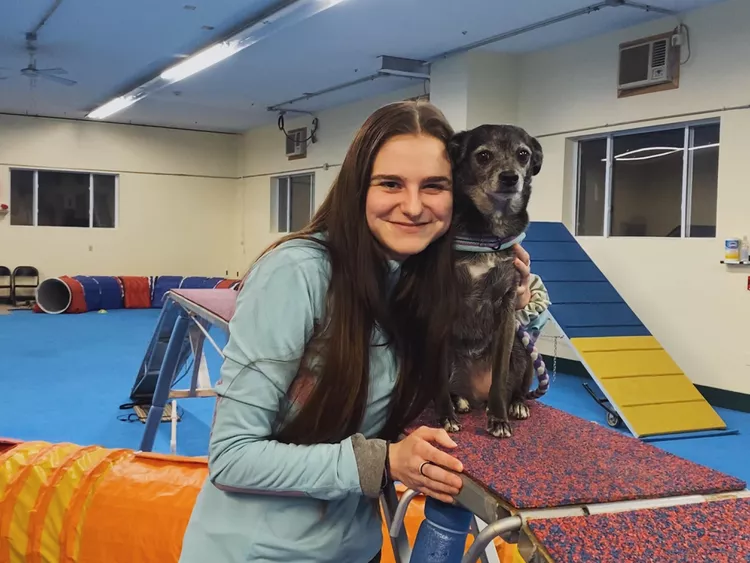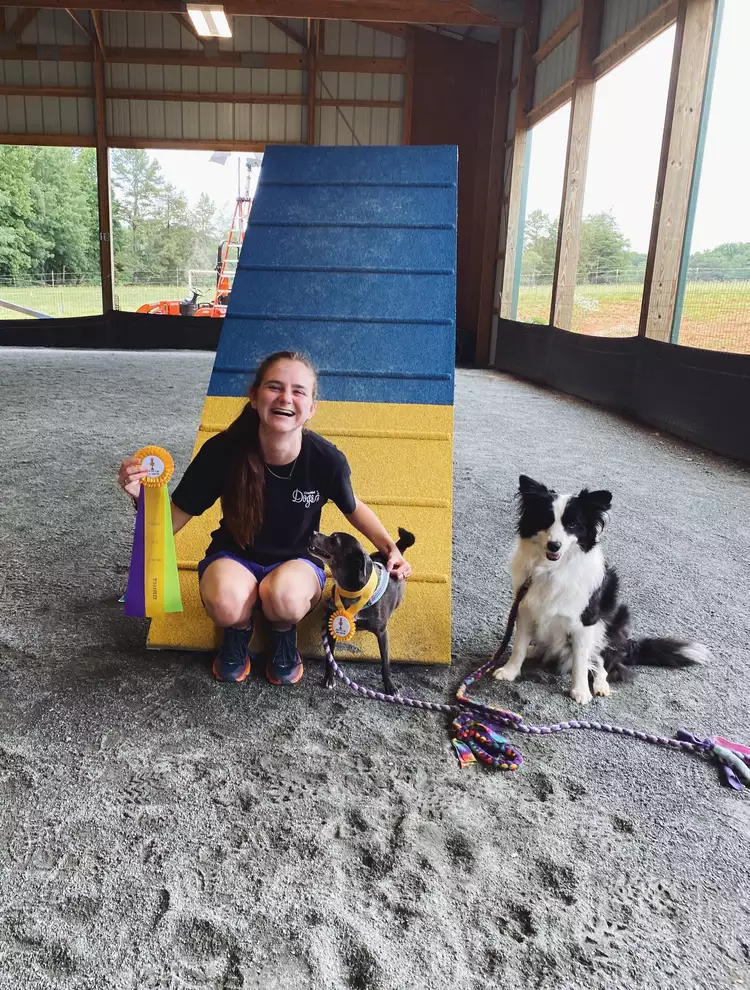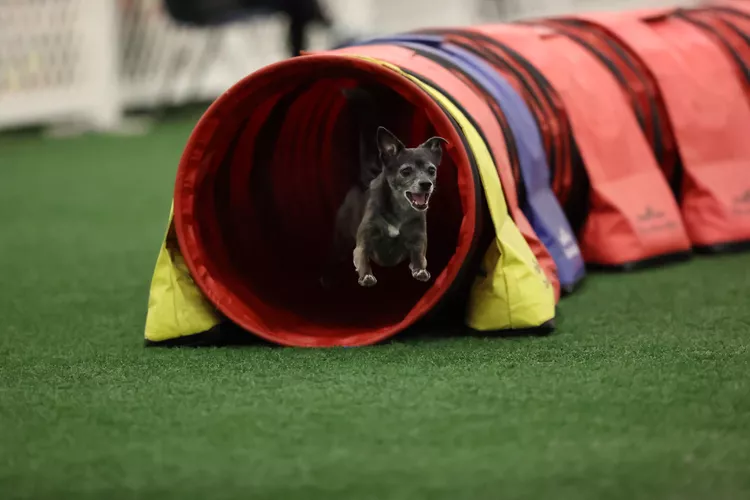When you think of agility training for dogs, you might picture a sleek Border Collie deftly navigating an obstacle course or a fast-moving dog executing tight turns with ease. While it’s true that agility training has historically been associated with certain breeds known for their speed and agility, it’s not limited to them. Agility training can be a rewarding activity for nearly any dog and their owner, regardless of competitive ambitions.
Jordyn Baker, a 19-year-old student at The University of Southern Maine, exemplifies this approach. Since starting agility training at age 12, she now competes globally with her rescue dog, Bentli. Baker runs Glorious Agility near Portland, Maine, where she teaches everything from basic agility skills to advanced techniques.

Here are some insights from Baker on the benefits of agility training, which dogs might need to take it easy, and the evolving landscape of agility competition:
Agility Training Strengthens the Bond
“Agility training is a fantastic way to deepen your connection with your dog. The primary benefit I see is the strong bond that forms as you both invest time and effort into training. This bonding experience is truly unmatched.”
Agility Training for All Ages
“Agility foundations can be introduced at any age. Early training, even before physical agility equipment is used, helps puppies learn useful skills and build confidence. I started training my Border Collie with targeting and toy play at just 10 weeks old.”
Agility Training Can Address Behavioral Issues
“Agility training can be surprisingly beneficial for high-energy dogs with behavioral issues. The physical and mental stimulation from agility can help manage excessive energy and improve overall behavior.”

Considerations for Brachycephalic Breeds
“Brachiocaphalic breeds, like pugs and French Bulldogs, should approach agility with caution. Their respiratory limitations mean they might not handle the intense physical activity well. However, they can still enjoy simpler agility elements like low jumps and weaving exercises.”
Not Suitable for Aggressive Dogs
“Agility is not ideal for dogs with severe aggression issues. The competitive and social environment of agility can be overwhelming for dogs with true aggression, as they may struggle with the constant interaction and stimulation.”
No Size Limit for Agility
“Agility training isn’t limited by size. Small breeds, like Chihuahuas, can excel in agility. I’ve seen Chihuahuas compete successfully at high-profile events, demonstrating that agility is open to all sizes.”

Basic Commands Are Essential
“Before starting agility training, it’s helpful for a dog to know basic commands like ‘sit’ and ‘down.’ This foundational training makes it easier to introduce agility skills in a controlled manner.”
Find the Right Trainer
“Choose a trainer who aligns with your training philosophy, especially if you prefer positive reinforcement. Research potential trainers to ensure their approach matches your values.”
DIY Agility Training Is Feasible
“Building a DIY agility course is possible and cost-effective. Using materials like PVC from a hardware store, you can create your own agility equipment. I trained with homemade obstacles when I started, using everyday items to teach basic agility skills.”

Rescue Dogs Can Thrive in Agility
“Rescue dogs can absolutely succeed in agility. With the right match and proper training, many rescue dogs, even those with past traumas, can excel. Choose your rescue with care and give them a chance to shine in agility.”
Diverse Competitors in Agility
“While breeds like Border Collies and Shetland Sheepdogs are often seen in agility competitions due to their athleticism, mixed breeds and less common breeds can also achieve great success. Agility competitions increasingly feature a variety of breeds, and mixed breeds sometimes outperform the more traditional ones.”
Agility training offers numerous benefits and can be adapted to fit a wide range of dogs, making it an accessible and enriching activity for many.




